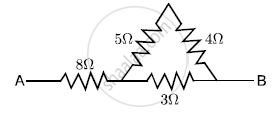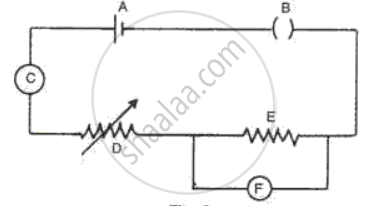Advertisements
Advertisements
Question
An electrical bulb is marked 200V, 100W. Calculate the electrical resistance of its filament. If five such
bulbs are connected in series to a 200V supply, how much current will flow through them?
Solution
Voltage V = 200 V, Power P = 100 W
∴ Electrical current = `P/V = 100/200 = 1/2` Amp
∴ Electrical resistance `R = V/I = 200/("I/2") `= 400 Ω
if five bulbs are connected in series to 200V
∴ Total resistance RT = 400 + 400 + 400 + 400 + 400 = 2000Ω
Current flowing thorugh a bulb `I = 200/2000 = 0.1 A `
APPEARS IN
RELATED QUESTIONS
Let the resistance of an electrical component remains constant while the potential difference across the two ends of the component decreases to half of its former value. What change will occur in the current through it?
Why are coils of electric toasters and electric irons made of an alloy rather than a pure metal?
Is Ohm’s law universally applicable for all conducting elements? If not, give examples of elements which do not obey Ohm’s law.
State Ohm’s law and draw a neat labelled circuit diagram containing a battery, a key, a voltmeter, an ammeter, a rheostat and an unknown resistance to verify it.
Calculate the effective resistance across AB?

A metal sphere is kept on an insulting stands. A negatively charged rod is brought near it, then the sphere is earthed as shown. On removing the earthing, and taking the negatively charged rod away, what will be the nature of charge on the sphere? Give reason for your answer.

Fig. represents the circuit used for the verification of Ohm's law. Label the parts from A to F. state the function of each.

Choose the correct alternative.
Which of the following is an ohmic conductor?
Obtain the macroscopic form of Ohm’s law from its microscopic form and discuss its limitation.
Why should an ammeter have low resistance?
